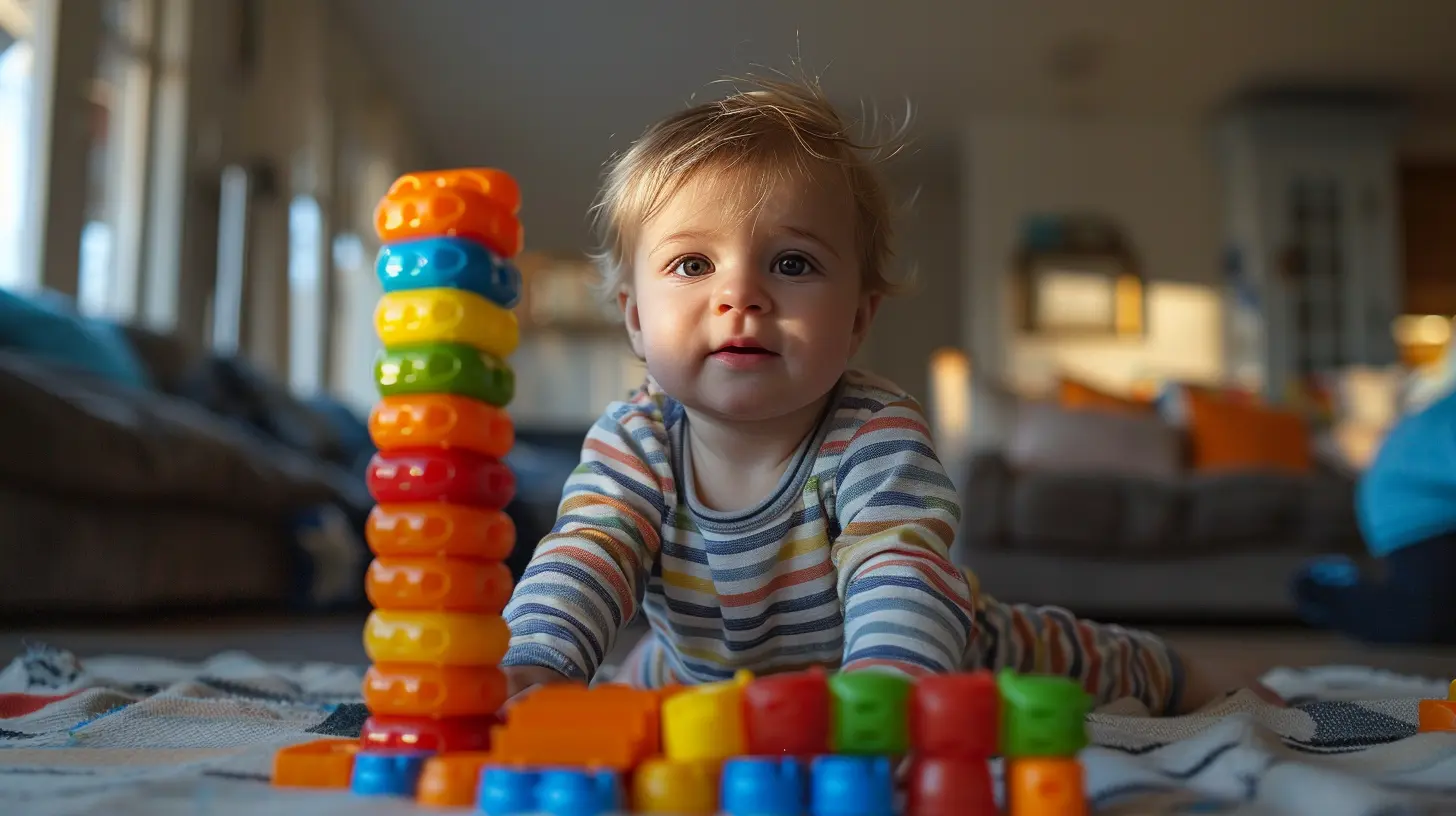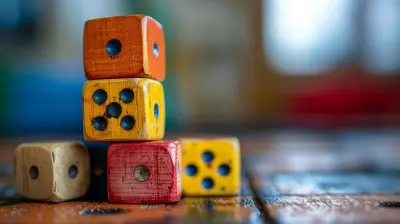How to Create Routines for a More Balanced Toddler Life
16 November 2025
Ever feel like your toddler is running the show 24/7 — and you’re just the exhausted personal assistant trying to keep up? You're not alone. Life with a toddler is beautiful chaos on a good day and unpredictable fireworks on a not-so-good one. But here’s the thing — toddlers thrive on predictability. Creating routines isn’t about being rigid or robotic; it’s about building a rhythm that keeps everyone sane.
If you’re wondering how to bring some calm to the storm and help your little human feel more secure, confident, and cooperative (yes, that’s possible!), keep reading. We’re diving into exactly how to create routines that actually work for your toddler and your family.
Why Routines Are Magic for Toddlers
Let’s be honest — toddlers are tiny control freaks. They want to decide everything from what to wear (usually something ridiculous) to when they eat. But structure doesn’t cage them in — it sets them free.Here’s why routines are like secret parenting sauce:
- They create predictability. Knowing what’s coming next helps toddlers feel in control.
- They reduce tantrums. When chaos goes down, so do meltdowns.
- They build independence. Toddlers start learning what to expect and how to navigate their day.
- They help YOU. Yes, you! A routine means fewer decisions and less stress.
Think of routines as the steady beat in the soundtrack of your day. Your toddler plays the melody, but you’re holding the rhythm steady.
Start with a Realistic Routine
Okay, pause. Before you create a Pinterest-perfect schedule that includes 30-minute intervals and organic, educational snacks — let’s get real.Your toddler is not a robot. Some days you’ll be winning at life, other days you’ll be bribing them with applesauce pouches just to get dressed. And that’s okay.
So, start small and flexible.
1. Think Anchors, Not Clocks
Toddlers aren't obsessed with time like adults. Instead of scheduling every minute, anchor routines around events — like wakeup, meals, naps, and bedtime.👉 Example anchor routine:
- Wake up
- Breakfast
- Playtime
- Morning snack
- Nap
- Lunch
- Outdoor play
- Dinner
- Bath
- Bedtime
These become familiar markers during the day that your toddler can count on. Even if snack time isn’t exactly at 10:30 a.m., they’ll understand the general flow.
2. Watch Their Natural Rhythms
Is your toddler a morning burst-of-energy type or more of a slow-starter? Do they crash by 1 p.m. no matter what? Pay attention to their patterns.Tailor your routine to match their energy levels. Forcing a slow-paced toddler into high-energy activities at 8 a.m. is a recipe for disaster (and a tantrum tsunami).
Build a Morning Routine That Works (And Doesn't Make You Crazy)
Mornings set the tone for the whole day. If your toddler starts off cranky, the rest of the day can spiral fast.1. Keep It Simple
You don’t need a ten-step morning ritual. Try something like:- Wake up snuggles (because who doesn’t love a cozy start?)
- Diaper/potty and get dressed
- Breakfast together
- A quick activity (puzzle, coloring, playing with blocks)
2. Give Them a Job
Even toddlers want to feel useful. Assign small tasks like feeding the dog, picking socks, or putting their dish in the sink. It gives them purpose and makes the routine feel participatory.
Nap Routines = Sanity Savers
Truth: naps are as much for the parent as they are for the child.Even if your toddler fights it, they need that mid-day reset. And the key to getting consistent naps? A mini pre-nap routine.
1. Wind Down Early
Start at least 15-20 minutes before naptime with calm activities — reading, soft music, or dim lighting. Avoid screens or high-energy play.2. Be Consistent
Do the same steps every day: diaper change, story, cuddles, sleep. Eventually, their bodies will associate this routine with rest.Quick tip: Not every toddler naps forever. Around age 2-3, some start phasing out. But even if they don’t sleep, keep a “quiet time” to rest their body and brain.
Mealtime Routines (No, They Don’t Have to Be Perfect)
Ah, mealtime — where peas are villains and the floor becomes a buffet. But believe it or not, routines can seriously help here too.1. Predictable Timing
Try to eat meals and snacks around the same time every day. It helps regulate hunger and reduces random snack demands (a.k.a. the “Goldfish hourly” problem).2. Eat Together
Whenever possible, sit and eat with your toddler. It models good habits and turns mealtime into connection time rather than a power struggle.3. Keep It Relaxed
Don’t stress if they only eat bites one day and clean their plate the next. The routine isn’t about perfect nutrition every time — it’s about building a consistent, low-pressure eating environment.Bedtime Routines: Your Secret Weapon
If there’s ONE routine you lock down, let it be bedtime. Seriously. A predictable evening routine can majorly reduce bedtime battles and improve sleep.1. Choose a Wind-Down Routine and Stick to It
Try something like:- Bath
- Pajamas
- Brush teeth
- Storytime
- Cuddles
- Lights out
Do it in the same order, every night. It cues their body and brain that it’s time to shut down.
2. Limit the Negotiations
Once you tuck them in, it’s okay to be firm. Set expectations: 2 books max, 1 goodnight hug, lights out. Toddlers love testing limits, but staying consistent helps them feel secure.Bonus tip: A toddler clock, like one that turns blue when it’s time to sleep and yellow when it’s okay to get up, can work wonders after age 2.
Toddlers and Transitions: The Real Challenge
You’ve got a routine. Great! But what happens in between all those anchor points?Transitions. And they’re tricky.
1. Give Warnings
Toddlers HATE surprises — unless it’s ice cream. Help them prepare for changes by giving simple heads-up:“5 more minutes, then we clean up.”
“After this puzzle, we’ll go brush teeth.”
Use a timer if that helps keep things neutral. When the timer beeps, the activity ends. Magic.
2. Use Songs and Signals
Sing a clean-up song. Clap your hands when it’s time to move. Create a silly “transition dance.” These cues become part of the routine and make transitions feel less abrupt.What If Your Routine Falls Apart?
Spoiler alert: It will. Life happens — sick days, vacations, teething, grandparents. Your routine might take a hit. Here’s what to do:1. Don’t Panic
One off-day won’t undo all your hard work. Toddlers are surprisingly resilient. Just gently guide them back the next day.2. Stay Flexible
Routines are tools, not shackles. If something’s not working, tweak it. Don’t force a nap at 1 p.m. if your toddler clearly needs it at noon.3. Watch for Burnout
If your routine feels more like a to-do list than a rhythm, scale it back. Focus on the big stuff — wake up, meals, nap, bedtime — and let the rest flow.Making It Stick: Tips for Long-Term Success
Let’s bring this home. You’ve got a foundation — now how do you make this routine stuff actually last?Set Visual Schedules
Toddlers love pictures. Use a simple chart with drawings showing:- Wake up
- Brush teeth
- Eat breakfast
- Playtime
- Naptime
- Story
- Bedtime
Let your child look at it with you every day. Bonus: Let them check off tasks!
Stay Positive and Consistent
Celebrate wins. “You got dressed all by yourself after breakfast — high five!”Keep calm during chaos. Toddlers feed off your energy, so keep your cool when the routine hits bumps.
Involve Your Toddler
Invite them into the process:“What should we do after lunch — blocks or reading?”
Let them feel like part of the team.
Final Thoughts
Creating a routine for your toddler isn’t about perfection — it’s about predictability. It’s laying down a rhythm they can count on even when everything else feels new and overwhelming (because, let’s face it, the toddler world is a LOT).So, start simple. Anchor the day. Embrace the chaos here and there. And remember — the goal isn’t a military-style schedule. It’s a smoother, more balanced life for both of you.
You’ve got this. And on the hard days? There’s always bedtime.
all images in this post were generated using AI tools
Category:
Toddler MilestonesAuthor:

Karen Hurst

